Hope You Like Rice
Hope you Like Rice
By Christie Belfiore
When it comes to Korean cuisine, there is one thing you can be sure of, you will be eating a lot of white rice and it will most likely be sticky. One thing I didn’t expect was the variety of ways you can eat rice: every day, at every meal, and not get bored of it.
Often paired with this simple grain yet delicious grain is the very popular kimchi. Kimchi is fermented cabbage that is generally spicy or sometimes sour and is served as a side dish to every meal. This typical Korean dish is not for everyone and definitely requires a certain palette, but it is never in short supply.
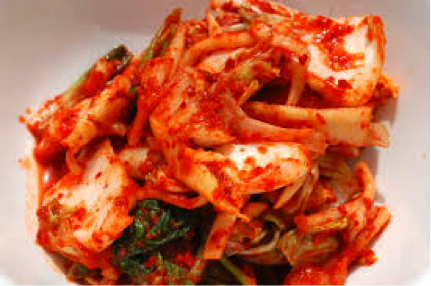
Kimchi Source: http://dinnerintervention.com/mak-kimchi/
After the rice and kimchi that you are sure to encounter (even for breakfast, which is very different than a western style breakfast), there are a variety of other dishes that range from meat-based to veggie-based to rice-based. A personal favourite of mine is kimbap, a quick and delicious meal, similar to Japanese Maki rolls except the rice is flavoured with sesame oil instead of vinegar.
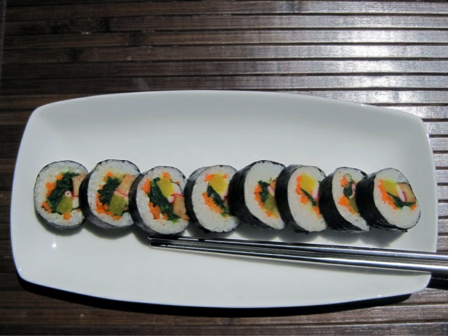
Kimbap Source: http://www.asianskinny.com/kimbap-healthy-korean-sushi/
Sticking with rice-based dishes is another favourite, but presented much differently. It’s called tteokbokki, long cylindrical shaped dumplings or rice “cakes” that are made of rice flour. It has the texture of gnocchi, but isn’t as heavy. It is always served in a spicy sauce of sorts, and mixed with cabbage and fish cakes. Fish cakes are flat pieces of fish, which give this dish its distinct flavour. Oh, and for some protein, tteokbokki is always served with a hardboiled egg. You can find it at almost every street vendor you come across, and it never disappoints.
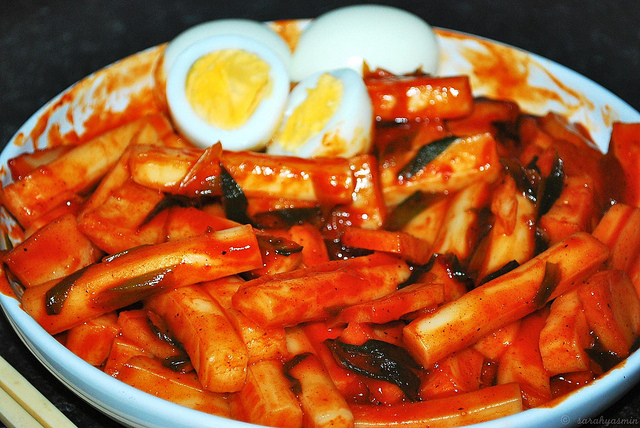
Tteokbokki Source: http://camerashake.wordpress.com/2012/11/04/recipe-of-the-day-tteokbokki-ddeokbokki-topokki-or-dukbokki/
Now for a soup: dukk mandoo guk. This soup contains meat dumplings (usually pork), bok choy and other veggies , and sometimes rice cakes. Much like tteokbokki, these rice cakes have the same rubbery texture, but are instead flat circles.
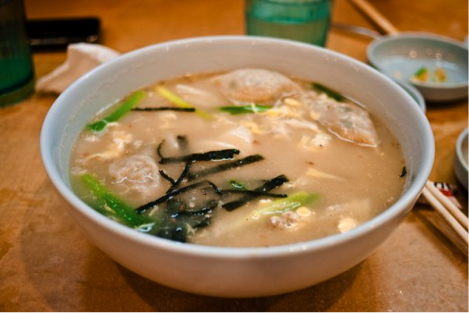
Dukk mandoo guk Source: http://www.yelp.com/biz_photos/hodori-restaurant-los-angeles?select=VFyCk0og5qU3Vj9C7eAryA#VFyCk0og5qU3Vj9C7eAryA
If you want to try a mixture of vegetables and rice, a very common dish is bibimbap. Bibimbap combines a variety of individually prepared vegetables with rice, and often times, meat (usually beef) or seafood. It can also be served hot or cold. If eaten cold, just mix everything together and eat away. If hot, the rice becomes a little crispy at the bottom, giving it extra flavour and texture. Bibimbap can also be topped with a red spicy sauce giving it a little kick.
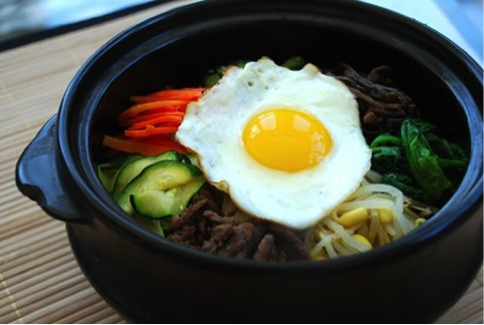
Bibimbap Source: http://www.koreanbapsang.com/2010/01/bibimbap-korean-rice-bowl-with.html
In terms of pub food, haemul pajeon, a seafood pancake is a very popular dish that is great for sharing. It is made of a variety of seafood, commonly octopus and shrimp, mixed with a lot of green onion, a little bit of batter, and then fried up.
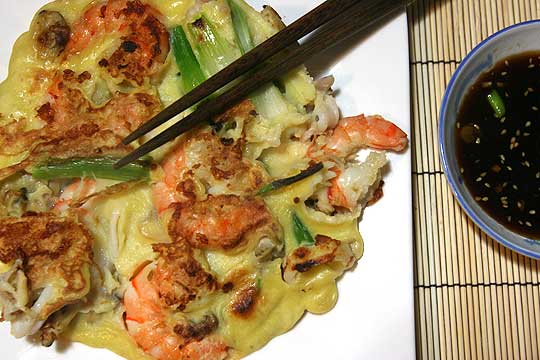
Seafood pancake Source: http://americanwater.blogspot.ca/
Another extremely popular dish in the Korean cuisine is sangipsa. This, like so many other dishes, is mean to be shared with a group of people. Sangipsa restaurants have grills in the centre of the tables, and after being brought a variety of side dishes such as, salad, corn, kimchi, rice, mushrooms, tteokbokki, and more, you are served raw pork that resembles bacon. You then fry the meant on the grill to your own taste and enjoy. You can also make little lettuce wraps with this. Just place the pork inside a lettuce leaf with some mushrooms and any other sides, add some sauce, and that’s it. Sangipsa is great for group outings.
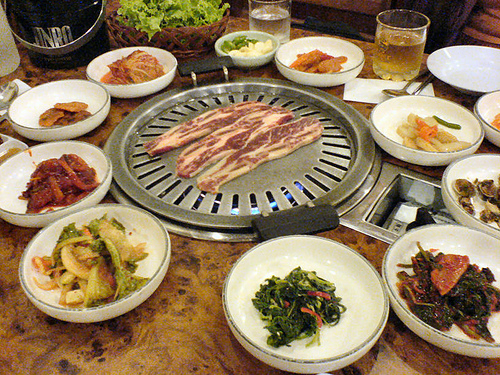
Sangipsa Source: http://www.shaolintiger.com/2006/04/05/mu-jin-jang-korean-bbq-restaurant-jalan-ampang/
For individuals on the go, street stands are phenomenal. Everything from tteokbokki, to deep-fried vegetables, to meat on a stick can be found. The street food is delicious and very accessible. In smaller towns around South Korea, you will find these stands every 20 feet. In larger cities, you will find them every block or two.
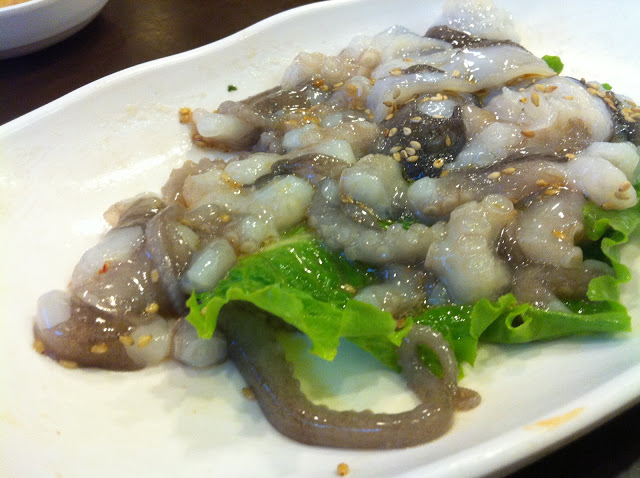
Moving Octopus Source: http://www.eatingwithkirby.com/2012/07/eating-live-octopus-with-foodology.html
As for an odd dish or two, and certainly not for the squeamish, you can order live octopus, moving octopus, and beondegi. Live octopus is exactly how it sounds. Pick up a live baby octopus with your chopsticks, place it in your mouth, and chew quickly. Moving octopus, on the other hand, is freshly killed octopus that has been cut up into small pieces, tossed in a tasty sauce, and then served with its nerve-endings still going wild. Lastly, we have beondegi—silkworm larvae. It doesn’t have a particularly nice smell, but is a very popular snack amongst local Koreans. It is often served as a side dish at bars or at street stands. As for the taste? Let’s just say it tastes exactly how one would expect.
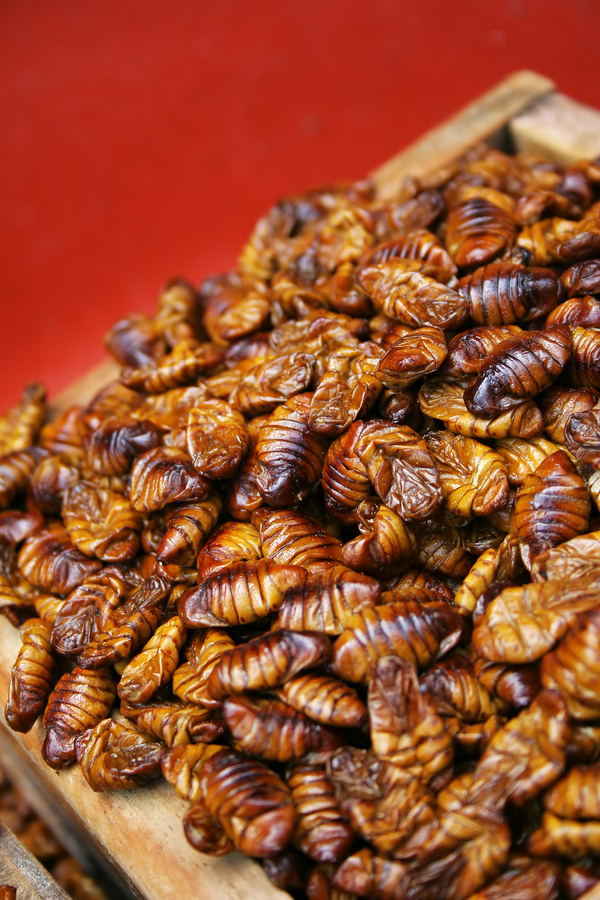
Beondegi Source: http://blog.asiahotels.com/10-must-try-south-korean-snacks/silkwormpupae
As for the most popular Korean alcoholic beverages, there is makgeolli, a rice-based liquor, very inexpensive, and can be purchased at any convenience store. If you are drinking makgeolli at a restaurant, it is often served authentically, in small bowls. Then there is soju, a stronger liquor, often times mixed with beer, or just taken straight like any popular shot of vodka or whisky, and can be purchased in any convenience store.
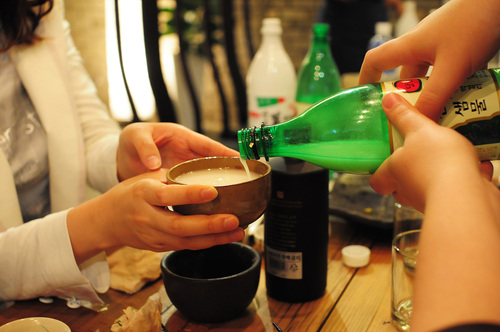
Makgeolli Source: http://asianhistory.tumblr.com/post/34364373947/thingsaboutsouthkorea-lovesouthkorea-makgeolli
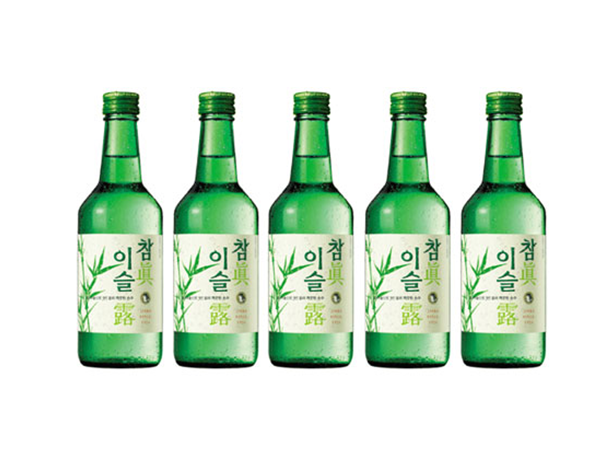
Soju Source: http://asianhistory.tumblr.com/post/34364373947/thingsaboutsouthkorea-lovesouthkorea-makgeolli
